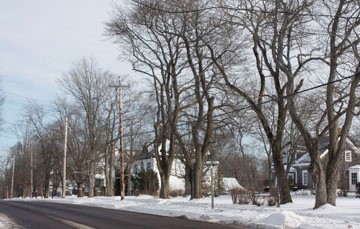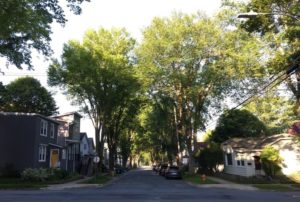In early January, the Atlantic Forest Health Workshop was held in Truro, Nova Scotia. Some of Atlantic Canada’s top researchers discussed the health of the region’s forests from a federal, provincial and municipal perspective. The attendees looked at current issues facing the Atlantic provinces including climate change and extreme weather impacts on urban trees and recent forest pest alerts. Emerald ash borer (EAB) is now in Moncton, NB and there were lengthy discussions on ways to combat it.
The information shared during this annual workshop is used to develop new and improved best management practices (BMP) or to add to what is already in current urban forest management planning programs.
The workshop focused on invasive pests with research data from the Atlantic provinces. Information was provided by the New Brunswick Department of Natural Resources and Energy Development (NBNRED), the Canadian Food Inspection Agency (CFIA), Natural Resources Canada (NRC) and the Canadian Forest Service (CFS).

Working with our partners across borders is critical to staying proactive when it comes to dealing with various forest pests. Many municipalities are investigating the use of TreeAzin ® and several have ordered the product to be used this summer to protect ash trees that are still healthy.
Spruce budworm numbers appear to be on the rise in Quebec, therefore more surveys will take place in New Brunswick and Nova Scotia forests this summer. The hemlock woolly adelgid in southwestern Nova Scotia and elsewhere, along with the elm trees which have the most history in municipalities across our region, continue to be monitored. Most cities have protection programs in place.
The Halifax Regional Municipality is working to create an inventory of almost every tree on municipal property in peninsular Halifax. The inventory will include all trees that were intentionally planted but will not include trees in naturalized areas. An estimate of 20,000 to 30,000 trees on the peninsula will be eligible for inclusion in the inventory.

The data will be used to improve budget planning for pruning (target trees that need pruning right away or can wait), removal and replanting, as well as to help monitor and prevent the spread of invasive pests, such as the emerald ash borer. Halifax did an inventory back in 2014 and this new data will add to that data base.
Charlottetown PEI is the host city for the CUFN Conference this October.
Back to all articles